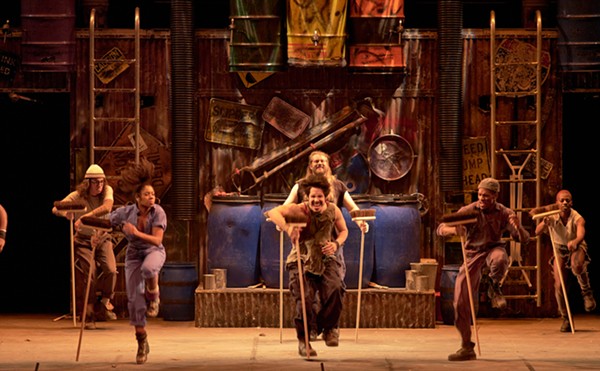A report released last week by the national nonprofit arts-advocacy group Americans for the Arts contains no surprises for anyone in the business: The people who run nonprofit theatres, orchestras, galleries and other arts providers already know that individual, corporate and government funding have all declined, as have audiences, along with the economy and personal check books.
The National Arts Index is news, though: It's a massive effort to put a number to the degree that the arts are thriving — or not — in this country. It tracks 76 national indicators of arts finances and participation across the 11-year period from 1998 to 2008. It sets the year 2003 as a benchmark, at 100. The index reached its high of 105.5 in 1999. The low measured by the index came in 2008, at 98.4, down 4.2 points from the previous year.
The study's author, Randy Cohen, Americans for the Arts vice president for local arts advancement, observes that the arts index follows the nation's business cycle. No surprise there.
Among other key findings: Demand for arts experience — at least from conventional, live, in-person sources — lags behind capacity. Across the period of the study, the number of artists, arts businesses and nonprofit arts organizations, and arts-related employment all steadily increased. The number of nonprofit arts organizations grew from 73,000 in 1998 to 104,000 in 2008. But the number of people going to art museums was down 13 percent from 2003 to 2008, according to the index. Audiences at popular-music events were down 6 percent.
Cohen observes that "sustaining that capacity is a growing challenge," along with the note that one out of three arts organizations failed to balance its budget even when the economy was good. The nation's arts organizations may have to deal with the possibility that "sustaining that capacity" might not even be a good idea. If supply exceeds demand, it may be a good thing to have less supply.
The most telling bit of information is that while more people — continually, across the survey period — are participating in the arts, including making art and music and taking it in, many are doing so in ways that do not help or count for traditional organizations: Whether it be lessons or performances, people are watching, listening and trading their stuff digitally, rather than in person.
To read the full report, go to artsusa.org.











